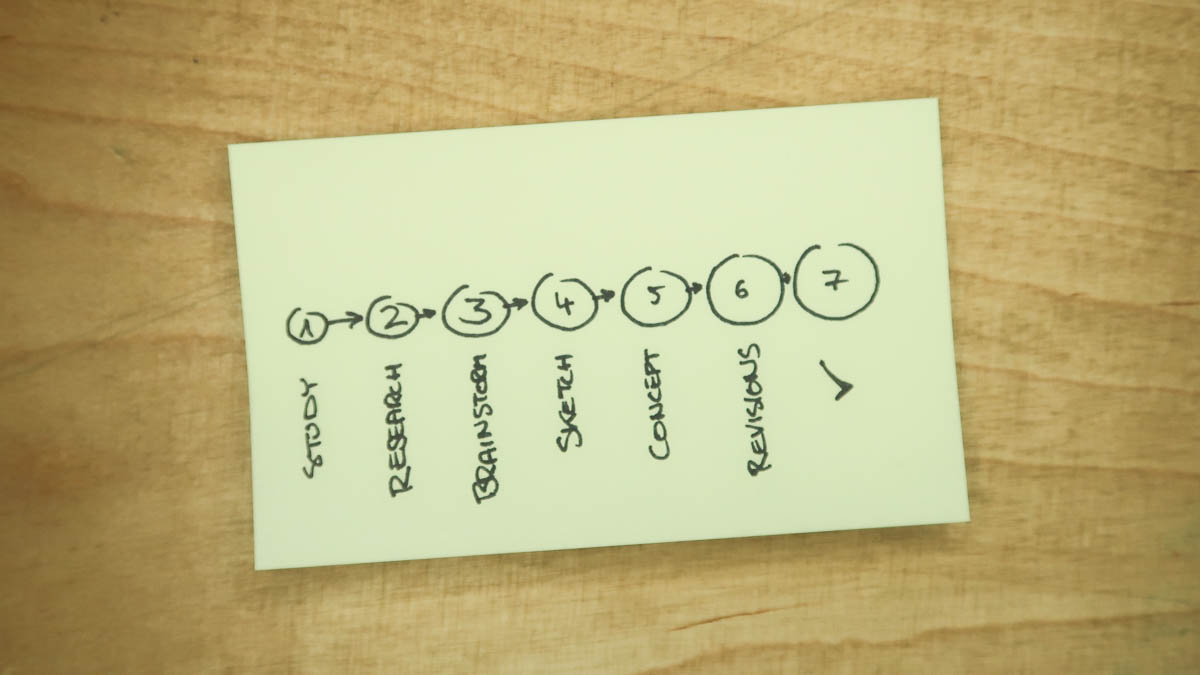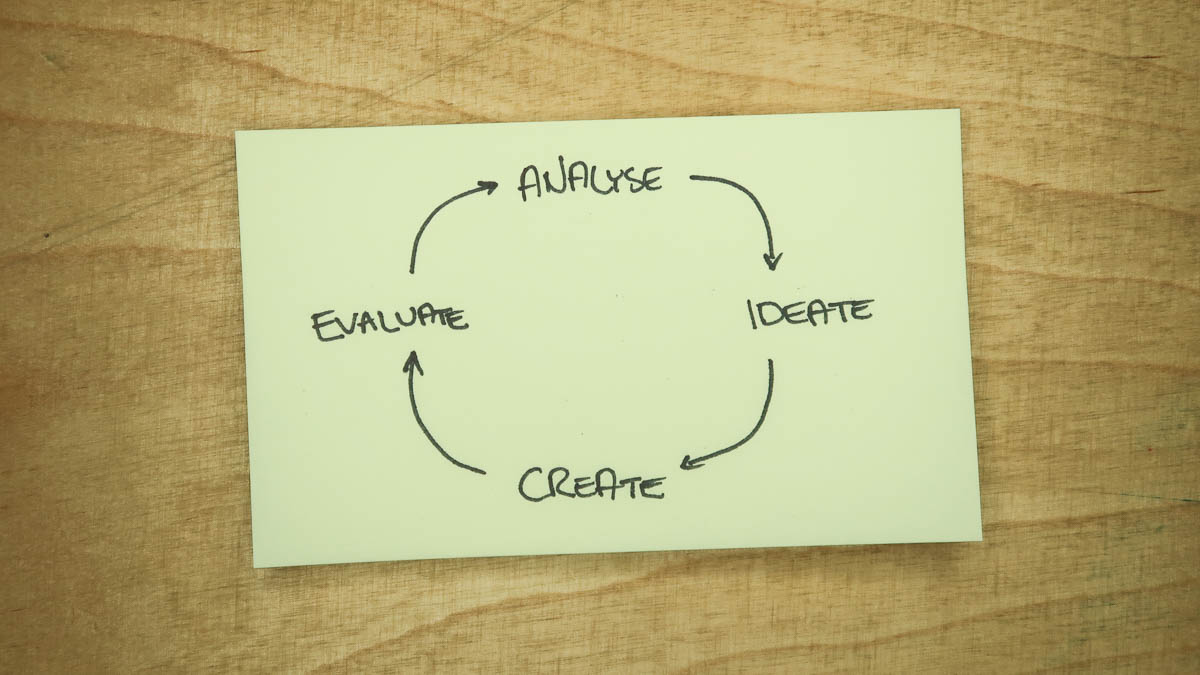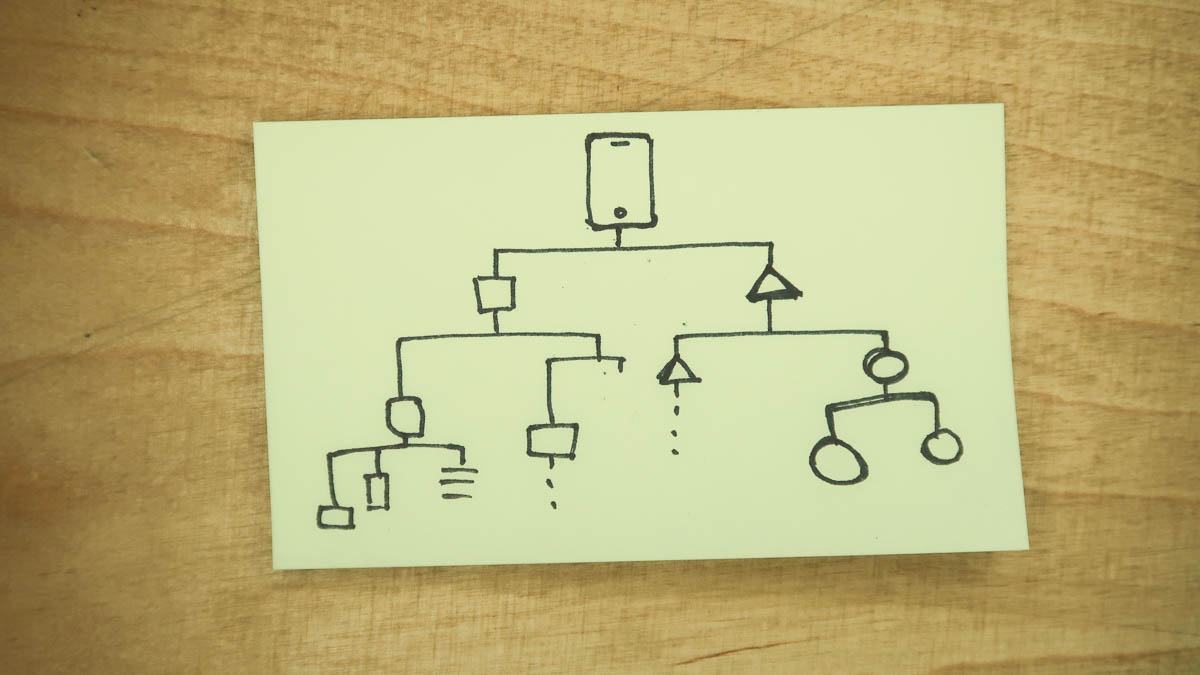Design Process Battle: Which One is the Best?

Great products don’t get cranked out – they are a result of structured work. Starting with a briefing and diving right in might look very courageous, but sure won’t bring you far. Product design is not about immersive dedication, it is about having a good process.
What does a good design process look like? And what can we learn from successful agencies and tech companies like Apple and Google?
Over the years, design processes have developed and evolved. Coming from a very straight and formal process to the fast-paced agile methods we know and use today. In this article, I will walk you through some of the most popular design processes. We will figure out their strengths and weaknesses and maybe, just maybe, give you a bit of an overview.
The Classic: Seven Steps

It might not surprise you that design processes do not actually stem from graphic or visual design – but rather from engineering. James Garret defined a linear process in his book “Design and Technology”, which most classic tech- and engineering companies implement today.
The idea is simple: a product development goes through a fixed set of stages, and at the end, you will have (or not have) a finished product. Typically, these stages are:
- Study – Find out what the problem is
- Research - Learn more about it
- Brainstorm - Generate ideas
- Sketch - Generate solutions/visuals
- Concept - Turn the ideas into full-fledged concepts
- Revisions - Solidify and improve
- Conclude & Report - Send the project off and call it a day
No surprises here, right? Let’s take a look at the advantages and issues of this process:
The Good.
- Straight-forward and very easy to communicate
- Fits into most company structures and cultures
- Even if it fails, some documentation is built in - makes it easy to learn for next round
The Bad.
- Very linear process - leaves no room for iteration or milestones
- No timelines defined - makes estimation impossible
- Leaves participants alone with creation and decision making
- Lack in flexibility during the process
While the Seven Steps process is easy to implement, it has some major shortcomings. In worst case, these can turn your whole project into a mess or cause it to fail while you are at it. How to do it better?
The Shorter One: Design Lifecycle

Enter the Design Lifecycle. Rooted in software development, the design lifecycle is a shortened version of the industry standard, cutting out the research and report parts.
As the name says, the design lifecycle acknowledges the fact that you probably will not get the perfect product at the first round. The process is built on iteration. Rinse and repeat. There is no timeframe defined, yet most implementations today seek orientation in usual Agile Sprints, making the design lifecycle one or two weeks long.
The Good.
- Repetition helps to produce and build results instead of perfecting them
- Great for tech startups
- Very little documentation overhead necessary
The Bad.
- Still easy to get lost in timeline or details
- Can be frustrating if lifecycle needs too many iterations
- Enables a “we tried this before” culture
The Buzzword: Design Thinking
Adapted and pushed forward by IDEO founder David M. Kelley, Design Thinking is a term that comes up most today when talking about design processes. Unlike popular belief, Design Thinking is not exactly a well-defined process. It is rather a toolbox of methods and principles that designers can use when coming up with solutions for problems.

Design Thinking puts the user in the center of the process, rather than the product or brand. It encourages designers to experiment. To push the boundaries of their current knowledge and create new solutions. Most Design Thinking implementations are a team effort. Working together when coming up with new solutions is a key principle of the toolbox.
The Good.
- Enables team culture and innovation mindset
- Very flexible and adaptable to business cases
- Allows for experiments
- Under constant development and improvement
The Bad.
- Not a defined process
- Buzzwordy - easy to fall for so-called “Design Thinking” experts
The Darwinist: Creative Selection

What would Apple do? What’s the process behind creating the iPod or iPhone? According to Apple-alumni Ken Kocienda, the magic in many of the hyped products from Cupertino lies in it’s unique Darwinist approach. He calls this process “Creative Selection”.
It works like the following: Any idea gets turned into a working demo, something you can touch or interact with. If you are unsure about a feature or have multiple ideas, the team builds multiple demos. Every once in a while, these feature prototypes get presented to the big decision-maker. Back in the days, that would be – of course – Steve Jobs. Based on the demo, he would decide which way to go or how to follow up and evolve the feature.
If things go smoothly, every team would focus on their field of expertise and research. Due to the interdisciplinary nature of the teams, they could all be assigned to work on the same issue and create many many demos tot choose from.
The Good.
- Works well if you are building and researching something completely new
- Getting a very clear experience of what the final product might feel and look like
- Focus on only the best ideas and simplify as much as possible
The Bad.
- Works for huge companies with lots of resources and ideas to try
- Only works with a visionary decision-maker like Steve Jobs
- Can create rivalry between designers and teams
The Cool Kid: Design Sprint

Design Sprints are a five step, five day design process, based on Design Thinking Methods. The Process has been developed at Google Ventures and is implemented in many innovative companies like LEGO, Lufthansa and Lyft today. Rather than being an everyday process, the intention of a Design Sprint (not to be confused with Agile Sprints) is intended to generate rapid learnings and cut down business risk. “Sprint” author Jake Knapp describes it as “Taking a look into the future”.
Design Sprints are usually run in a workshop format over the course of a work week:
- Day 1: Map – Learn as about the challenges and define a core problem
- Day 2: Ideation – Generate as many solutions as possible
- Day 3: Decide – Discuss and vote on the best one
- Day 4: Prototype – Build a usable/testable dummy
- Day 5: Test – Expose the product to real users and get feedback
At the end of the week, workshop participants have evaluated a business problem, have come up with several potential solutions and have prototyped and tested the most promising ones.
Due to its massive success in the tech and service industry, different sprint models have evolved out of the original process: The Design Sprint 2.0, which can be run in 4 days, or the New Factors Design Sprint, which generates feasable results within a 3 hours.
The Good.
- Very fast results, “a look into the future”
- Omits pointless discussions
- An outcome is always guaranteed
- Adaptable and industry-proven
The Bad.
- Cannot/Should not be used every day
- Needs experienced facilitation
What else?
What is your current process? Am I missing an important point here? Let me know on my Twitter, I am curious to hear your experiences.